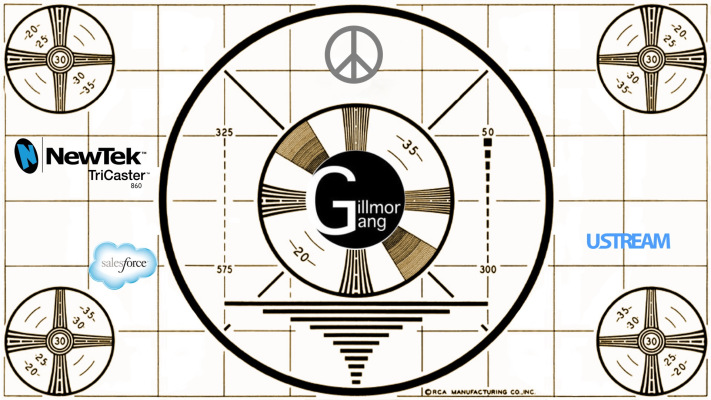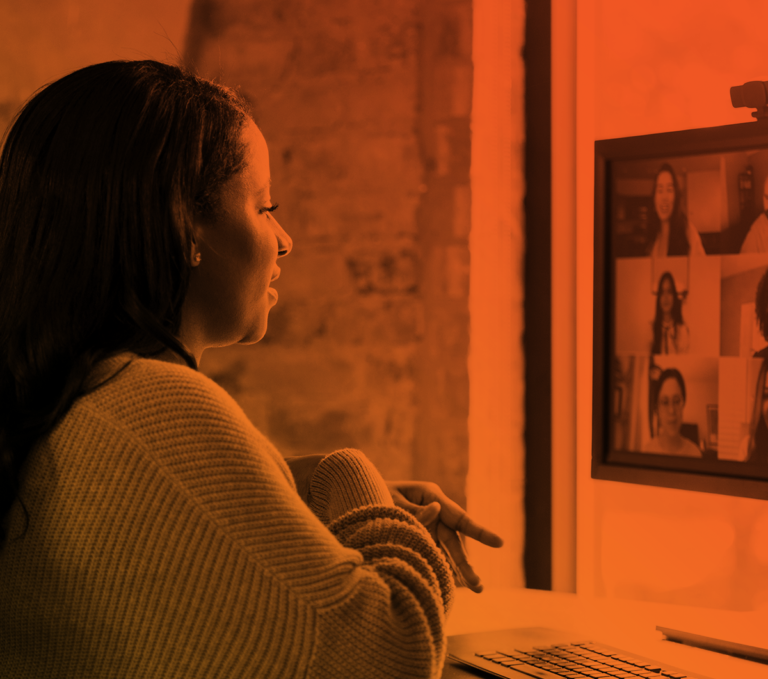
It turns out the most important decision made was not the vote to choose (and remove) in the election but Twitter’s permanent banning of the former President from the social network. Suddenly the temperature cooled, the new administration engaged with the details of vaccine rollout, and the second impeachment trial ended with an expected outcome. Twitter’s move was bipartisan if the trial was not.
Twitter’s other big move was the acquisition of Revue, a Substack competitor we’re moving to in production of the Gillmor Gang newsletter. It features tools to drag and drop articles from Twitter, Feedly, and other newsletters, but crucially the ability to reorganize these chunks as the writing develops. It’s my bet that the newsletter container will absorb blogs, podcasts, and streaming into a reorganized media platform available to creators small and large.
This kind of organic process development meshes well with the newsletter model. It encourages more timely releases, and an editorial feel that prizes quality over quantity. As newsletters proliferate, an evaluation of time over volume becomes most significant. It’s less an eyeballs pattern than a prioritization of what is not chosen and then what is, consumed or annotated with social recommendations. As with the Gang’s Frank Radice Nuzzel newsletter, the focus becomes less flow and more authority or resonance.
Daily Commentary
I have made the decision to cover the media exclusively in “The Radice Files” There are plenty of general news aggregators out there, and I for one, am just tired of those stories. I hope you’ll stay with me.
Instead of non-stop Trump, the only political story in the revamped Radice File is about how Fox News cut away from House manager video testimony to a commentary on the futility of covering the violence given the lack of votes for conviction. This shadow dance happens not just on Fox but the other centrist or left networks like CNN and MSNBC. The slant is not what’s interesting; the networks’ business model and the subtle effect on media programming is.
No wonder that streaming’s impact is being felt in the latest unicorn from Silicon Valley, Clubhouse. The audio streaming podcast disruptor is marketed as a FOMO inside hallway conversation, with a Twitter social cloud viral onboard mechanism that digs deep into your contact list and never lets go. Big ticket items such as a keynote-like conversation with Elon Musk are overbooked from the first minute. I tried unsuccessfully to join this week’s follow up with Marc Andreessen and his VC partner Ben Horowitz but it was sold out at 5000 after 30 minutes.
But there is definitely something tugging at me as I get notifications of people joining and creating rooms on various glitzy Valley topics. The live feeling of serendipity and catch it as you can promises the possibility of lightning in a bottle, the sensation of history being made, not just observed. Probably just an illusion, but it’s reminiscent of the feeling we used to get when putting a record on the turntable and daring the artist(s) to succeed. I still get that every time Miles’ Kind of Blue resumes, the awe with which time is reorganized at the atomic level.
People say a Clubhouse can go easily from 1 to 5 hours. I think RSS was killed by the red unread marks indicator. Size matters? Probably, if my college research suggests. But more important than length is ROI, and that’s where the Clubhouse effect dovetails with the newsletter moment. The ingredients of both are intuition, choice, the organic breadcrumb trail, and the payload.
Intuition
Does this notification fit in with what pattern I’m trying to discern this moment. I love movies like Citizen Kane and North By Northwest for the mirage that they project of a universe fated by a biologically innate DNA. Sometimes we call it fate, other times dumb luck, but always that dumbest of phrases: It is what it is. Only this time the conceit is: It is what it’s about to be is. And if something happens, yes, I knew it. Not specifically, but given the mood the planet is in, it figures this could happen.
In a newsletter: the game is not to read everything, but only what and when and in what order. The prize is the analytics, which reward the reader with more stuff, and the publisher with validation of the impact of the combination of choice (citations) and context (writing.) In Clubhouse, it’s being in the room and what — knowing when to bail? For me it’s escaping the inevitability of the point being made in a podcast, or the filter of the business model of what I’m going to do next. If it’s Sunday, it’s Meet the Press. Maybe…
Choice
There’s a bunch of choice: Choice of room, people, time invested, moment of throwing good money after bad. Choice of what I’m playing hookey on — work, cable news, family fun, sleep. Clubhouse lets you publicly eavesdrop, a broadcast @mention that doesn’t give you the option of lurking. But you can do the closest thing to multitasking: doing the dishes, playing with the dog, monitoring. cable news with the sound off, DJ-ing for a private room, driving, etc. It is the new radio, pandemic be damned. Wherever you go, there you still are.
Newsletters? People, time reading, research replacement, subscription development, form of payment (money, authority, trust), influence or eyeballs. The game is trading current media for future rebundling, where the new publishers, studios, and artists are grown.
Breadcrumb trail
These choices create the breadcrumb trail, plowing under the old and furrowing the new. Newsletters are the leading edge of this refactoring, tilling the memes, models, and markets for the trends that become viral. The analytics of opens, email vs. web clicks, and notification triage are implicit for the most part in their signal. Harvesting these breadcrumbs requires the impact of new content created in response to the earlier data. Once you’ve identified a valuable consumer, your real work has just begun.
First, you look for the signature of exultation, the embedded essence of the experience that a certain combination of intuition and action rewards the detective. For that is what this new media is: an information thriller that taps into deep reading, listening, and sharing. Every catch phrase — round up the usual suspects, or we are not the droids you are looking for — represent uber themes we crave to navigate a terrifying treacherous world. We are the droids we’re looking for, and these new medias represent possible parallel worlds where we can not just survive but honor values of our choosing.
In the movies, it’s called the plotline. Clubhouse presumes there’s a story worth waiting for, the moments where we gain power by sharing and decorating reactions with clues as to what part of the same elephant we are investigating. We know intuitively that we’re not going to learn business secrets, but there is gold to be retrieved from the participants as they share their sense of humor or lack of it, their rhythm of when they join, raise their hand, are successful at being invited on stage, when they leave, whether they boomerang, and only a little what they actually say. The price for this is your breadcrumbs.
The Payload
As much as I’m intrigued by Clubhouse, I’ve only actually joined or started a room twice. Once was by accident, as I realized by clicking on a link to see who was there. Me, I found out. Another was a conversation about a Techmeme podcast by the podcaster and Chris Messina of hashtag fame. I never could get into the big A16Z attractions. Like Frank Radice’s newsletter pivot, I was primarily interested in the atmospherics surrounding Andreessen Horowitz’s media strategy. But that doesn’t obviate the steady feeling that something substantial is going on here.
Media generally is swallowing its pride in the wake of the political nightmare we’ve been living through. Notice I say media, not mainstream media or social media. Smarter people than me can debate the distinction, but I think the difference between the two is overstated, and more importantly, not that indicative of what the value of these new media surges will turn out to embody. More and more, the substantial writing that filters in on Twitter, RSS (through Feedly), and aggregators like Nuzzel and Medium is significant in its approach to the central issues we’re struggling with. That includes traditional players like the New York Times, Wall Street Journal, The Information, and the tech journals, as they combine newsletter techniques with their substantial resources.
We’re seeing a merger of the medias, with the consensus around value and weight being measured by new metrics. In television, it’s the NewFronts combining digital and linear TV; in music it’s at the song level, not the album. Streaming has shaken the old networks to their core, with a horse race between Netflix, Amazon Prime, and Hulu, and ABC, NBC, and the old CBS. M&A has swallowed Fox, Time Warner, FX, and even an old studio, Paramount. And radio? You could say the usual suspects Apple, Google, Amazon, and Spotify, but Clubhouse? Like Zoom, I think so. Twitter and Facebook have bigger fish to fry, but Apple Car and Glasses are the key platforms Clubhouse will play in as we move into the autonomous work from anywhere reality. The payload is value, time management, and notifications at the core of the move to digital.
from the Gillmor Gang Newsletter
__________________
The Gillmor Gang — Frank Radice, Michael Markman, Keith Teare, Denis Pombriant, Brent Leary and Steve Gillmor. Recorded live Friday, February 19, 2021.
Produced and directed by Tina Chase Gillmor @tinagillmor
@fradice, @mickeleh, @denispombriant, @kteare, @brentleary, @stevegillmor, @gillmorgang
Subscribe to the new Gillmor Gang Newsletter and join the backchannel here on Telegram.
The Gillmor Gang on Facebook … and here’s our sister show G3 on Facebook.






